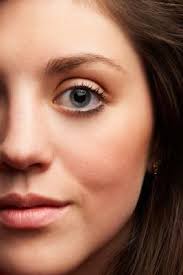The facial muscles basically consist of a group of almost 20 skeletal muscles which are flat in shape and lie under the facial skin. Most of these muscles originate from the fibrous structures or the skull and they radiate through an elastic tendon to the skin. There is no fascia (only the buccinators) that surrounds these muscles. This is unlike all the other muscles which are surrounded by the fascia.
The facial muscles are all supplied by the facial nerve and they derive from the second pharyngeal arch. They originally formed a single muscle plate but then split apart during embryological development.
Most of the facial muscles are located around all the facial openings (i.e. ears, nose, eye and mouth) while some of them stretch across the neck and the skull and with the right (exercise) muscle component can stay healthy with a youthfull look. Unlike the other skeletal muscles, the facial muscles move the skin instead of the joints. . Below are the different types of facial muscle based on their location
Muscles around the neck and the cranium
Epicranius muscle- These types of muscles are located on the forehead, above the ear (i.e. the temporaparieta), the outer surface of the head (these are the occipitofrontalis muscle) and at the fibrous layer on the scalp (galea aponeurotica).
- Platysma muscle- It is located above the parotid facia (i.e. the mandible) at the top of the pectoral facia (i.e. the 2nd rib).It is attached to the clavicle and jaw line as it smoothes over the neck
Functions
Epicranius is responsible for elevating the ear and the eyebrows. The platysma on the other hand tightens the skin and also pulls the corner of the mouth both laterally & downwards. Auricular muscles vary from one individual to the other and this is what allows some people to be able to move their ears voluntarily.
Muscles of the mouth
- Buccinator muscles – they are located at the mandible and maxilla and at the angle of the mouth. They are the muscles that form the base of the cheek
- Orbicularis oris mucle- this is the muscle that encircles the mouth
- Levetor labii superioris muscle- This is located above the upper lip i.e. the infraorbital foramen
- Levetor labii superioris alaeque nasi muscle- These are located on the nostrils and on the upper lip i.e. the medial orbital wall
- Depressor labii inferioris muscle- This is located on the lower lip i.e. the mandible underneath the mental foramen
- Depressor anguli oris muscle is located at the angle of the mouth i.e. at the lower mandible border
- Mentalis muscle- This forms the furrow between the lip and the chin
- Levator anguli oris muscle- this is located at the angle of the mouth ( i.e. underneath the infraorbital foramen)
- Risorius muscle- This is also known as the laughing muscle and it is located on the cheek i.e. at the angle of the mouth
- Zygomaticus minor and major muscle – they are located on the zygomatic arch (at the angle of the mouth)
Functions
These muscles are mainly responsible for the depression and the elevation of the angle of the mouth, the lower and upper lips as well as the opening and closing of the mouth. In addition, the levator labii superioris alaeque nasi muscle is responsible for pulling the nostrils upward thus opening the nose. These muscles (especially those on the lips) are responsible for speech.
The eye lid muscles
- The muscle that encircles the eye is known as the orbicularis oculi muscle
- The muscle located at the medial angle of the eye(i.e. the eyebrow skin) is known as the Depressor supercilli muscle
- The corrugators supercilli muscle is located above the nose root and also on the eyebrow skin.
Functions
The orbicularis oculi is responsible for closing the eyelids, supporting the flow of tear fluid and at the same time allows the eyes to squint. The other two muscles allow wrinklimng of the forehead and also depress the eyebrow.
Muscles of the nose
- Nasalis muscle- This is located on the nasal cartilages
- The procerus muscle is located on the nasal bridge i.e. the skin between the eyebrows
Functions
These are the muscles responsible for wrinkling up the nose as well as narrowing the nostrils.
Note that, the facial muscles are not only responsible for regulating the width & the position of the facial openings but they also enable them to be more expressive. This is what enables the face to convey the emotional as well as the psychological state of an individual which is very essential in non-verbal communication.

